Labour and birth is primal, powerful and transformative. Very few women would say they’ve journeyed through pregnancy with no fears whatsoever.
But don’t worry. Good can come from fear if we recognise it, and use it to drive an invested commitment to preparing our mind and body for an empowering birth.
There are many common fears about labour, and we can’t promise it will be easy, but it will be worth it.
No matter the type of birth – vaginal or caesarean, drugs or no drugs, when you walk into labour having cultivated a deep, ingrained trust and confidence in yourself, you are far more likely to walk out of it with a positive experience.
Read on to find out how.
1 – The Pain
I often hear, “I have low pain tolerance, so I don’t know how I’ll cope with labour”.
Believe it or not, labour is more about mental strength rather than physical strength.
The good thing for women is that during pregnancy, our brains are in a heightened state of neuroplasticity, meaning we can actually rewire our brain!
Your body’s ingrained knowledge of birth is near-perfect, but it is our brains that can get in the way.
Think of what messages about birth you’ve already been exposed to – women screaming behind sterile drapes in movies, and horror stories told by our friends, family, and even strangers.
As a society, we are letting women down before they have even conceived their first child, it’s no wonder there is so much fear around birth.
Before having babies, pain is a negative thing. It only ever comes as a result of something physically unpleasant.
But is the birth of a child unpleasant?
Shouldn’t women be able to walk away from this normal life event feeling strong and empowered?
That type of birth experience isn’t just for the earth-mama types. I have seen it with my own eyes, time and time again, women from all different backgrounds and beliefs.
There is no denying labour and birth is hard. It demands every part of your being, then you emerge on the other side of it completely transformed.
It is hard, and it hurts.
The women I’ve seen walk away from their birth with euphoria and empowerment, loving birth, would tell you the same.
So how do they turn ‘hard’ and ‘hurts’ into ‘euphoric’ and ‘pleasant’?
Here are some things they do in common, that you can do too:
- Educate yourself about the ‘fear-tension-pain cycle’. You guessed it! Fear (mental) creates tension (physical) which creates more pain. Reduce the fear – reduce the pain.
- Learn how your own body’s hormones (endorphins & oxytocin) are designed to PROTECT you from the pain of labour, and how our birth environment (people included) can either help that happen really well, or stop it from happening altogether.
- Understand the power of positive thought and Hypnobirthing techniques (such as fear release) on training the mind to best support labour and birth, rather than hinder it.
2 – Poop & Pubes
Courageous women always ask whether they will have a bowel motion during birth (yes, it’s normal), and what’s the etiquette regarding pubic hair.
So, these curly topics have made it onto the common fears list.
You’re probably sitting here wondering the same thing.
It may help to know that Midwives could not care less.
We see this stuff every single day, so much so in fact, that I am literally writing this post 5 hours after attending a birth and trying to remember if she had pubic hair or not… I can’t remember.

3 – Tearing, Being Cut, & The Burning Sensation
Straight to the point with this one – you are a normal woman if you’re worried about how your vagina will fair after birth.
It just doesn’t seem natural that something so big can fit through something so small with minimal impact.
Here’s the cool bit – remember I said our body can use it’s own hormones to protect us from pain sensations?
Well, it can also adapt itself to birth a baby with minimal impact.
Here’s what you need to know:
- The tissues and muscles of your vagina become REALLY stretchy in labour, moreso than you could possibly imagine.
Just as your body knows how to grow a baby without you even thinking about it, it knows how to birth a baby. Trust that.
- Use affirmations like ‘I soften and I open’ when in the end stages of labour, because fear will cause tension of pelvis and vagina. Be like Elsa and let it go.
- Learn and use perineal massage techniques in pregnancy from 34 weeks onwards.
This is a great way to prepare your mind and perineum for the sensation of birth, whilst minimising your risk of having a significant tear (3rd/4th degree) or episiotomy.
- Educate yourself on how birthing environment, caregiver, position during birth, and pushing techniques can impact your risk of tearing, so that you can choose strategies that will minimise risk.
4 – Being Noisy
Some women really fear this one. But I assure you, there is nothing more powerful than a woman who roars in labour.
Mayim Bialik says it better than I could
“Birth is not neat and fast and quiet; it’s gritty and primal, but it’s nothing to fear – unless you think we also ought to fear women crying when they are sad, or laughing when they are happy”
Most women labour loudly, and some women labour quietly.
What you need to know is that a tense jaw and face equals a tense pelvis.
Scrunch up your face as tight as you can and hold it – notice other parts of your body that also become tense?
High pitch screams will work against your body and labour. This is why it is important to vocalise low noises, deep primal noises, almost like the moo of a cow, whilst the face a jaw are relaxed.
Practice in pregnancy. Your real labour noises will come instinctively at the time, but it’s a great exercise to pay attention to the different physical response your body has to making different noises.
5 – Cord Around Baby’s Neck
There is a common misconception that an umbilical cord around a baby’s neck is dire. That somehow they may be strangled.
In actual fact, it is not an issue.
About a third of babies are born with cord around their neck, and sometimes it’s even looped around the body, under arms and through legs.
While a baby receives their oxygen and nutrients through the cord before birth, they are not breathing, thus their airway can not be ‘strangled’.
Your baby’s cord is just as incredibly designed as they are – the vessels of the cord that provide oxygen are protected by a thick gelatinous substance called Wharton’s Jelly, which acts as a buffer against compression.
Not to mention the various lengths cords come in – with all that wiggling, bubs are bound to get themselves tangled up.
Nuchal cord (cord around the neck) is definitely not an indication for caesarean section. Australian Midwife, Dr Rachel Reed studied nuchal cords for her PhD and has written an article specifically for educating parents, it is very much worth a read.
6 – Having A Caesarean
Fear of having a caesarean is a biggie.
I hear this one a lot from women, whether planning a vaginal birth or elective caesarean. I could list at least 30 reasons why women fear them – so I won’t go too deep into that.
While caesareans can be a life saving procedure for baby and/or Mum, it’s important to remember not to discount your emotional wellbeing.
We often hear ‘well, at least baby is ok” following planned & unplanned caesareans, but we need to acknowledge that there can be a lot of grief and disappointment that comes with that experience.
Emotional wellbeing is imperative to bonding and confidence as a mother.
If having an elective caesarean, or planned caesarean for the wellbeing of yourself or babe, it is worth educating yourself about delayed cord clamping at caesarean, skin-to-skin in theatre, and of recent interest to women – vaginal seeding.
Having informed yourself about these topics, talk to your Obstetrician about your values and wishes.
Having a caesarean doesn’t mean you have to surrender all of your birth preferences.
If you are planning for a vaginal birth and find yourself incredibly fearful of needing a caesarean, this is where brain training comes into play.
Utilising a fear release script, positive affirmations/visualisations, and hypnobirthing education could be of significant benefit to you.
You may even consider finding your own Midwife to have ‘continuity of care’ throughout your pregnancy, birth, and 6 weeks postnatally.
One of the many benefits of continuity of care is the reduced rates of caesarean section.

7 – Getting To The Hospital Too Soon Or Too Late
You haven’t had a baby before. You have no idea what to expect or when you should go into hospital.
Or perhaps you have had a baby, and you’ve heard that second babies can be so much quicker. Should you go in early just in case?
I’m sorry to say, there is no one clear answer – birth is not a one size fits all event.
So how can you prepare yourself, so that when the time comes, you can listen to your instinct, and make the decision to ‘go in’ or wait a little longer, free of fear?
Educate yourself.
- Look into what early labour looks like. How long can you be in early labour? What if it starts and stops? What can you do to help yourself – rest, nourish & hydrate.
- Research what behaviours and signs women have in active labour.
- Talk to your Midwife! Midwives are a fountain of knowledge. If you haven’t found one who will give you the time and space to ask questions and discuss your fears, then keep looking.
8 – Having A Long Labour
‘I was in labour for 3 days’. We’ve all heard them. The horror stories of the labours that went for days and days.
I promise you – it doesn’t happen like that.
I like to say my first labour was 25 hours from start to finish. I get a sense of strength from that.
But really, the first 15 hours of it was spent relaxing in the bath, drifting in and out of sleep, watching a movie, pottering around the house, doing my makeup, chatting to my friend/hypnobirthing teacher on the phone, chatting to the hubby, over analysing how infrequently my surges were coming, and having something to eat.
Staying in your own home environment in those early stages make it really doable, and not feel like it’s taking so long.
Move freely, eat freely, distract yourself, rest, and keep it intimate and private.
Labour is (usually) transitional – it builds up from being gentle to demanding all of your attention.
You can reduce the amount of time that takes by utilising a lot of the techniques we’ve already discussed throughout the post.
9 – Emergencies
Fear for Mum and baby’s wellbeing…fear for their lives… is very common amongst partners. It feels as though we are only starting to acknowledge birth trauma & PTSD in partners.
The number of men who suffer this is much more than we recognise. Of course partners have birth experiences too, and they may be similar or different to Mum’s experience.
A positive step that yourself and your partner can take in reducing fear surrounding emergencies in labour and birth, is to educate yourselves about normal birth.
Inform yourself so that you can view labour and birth as a normal life event.
Talk to your Midwife about how to keep birth normal, the cascade of intervention, and possible emergency situations and the management of them, so that you don’t feel like a deer in the headlights if they do occur.
Vocalising your fears with each other can also be an effective way to help you pinpoint exactly what your worries are.

10 – Birthing After A Traumatic Birth Experience
My heart holds a lot of love and sadness for women (and partners) who walk away from birth with emotional scars. I could write all day about this topic, but for the sake of this post I will keep it short.
BirthTalk specialises in healing from a traumatic birth, and having an empowering birth no matter how you are birthing.
The wonderful founders have also written a book called ‘How To Heal A Bad Birth’ which I cannot recommend highly enough for women who are either considering having another child, or are preparing to birth another child following a traumatic experience.
As a Private Midwife, I would say about half our clients come to us following a previous traumatic birth experience.
We often have women breaking down in tears at their very first appointment, processing the past, so they can embrace the future.
It is said that often, birth trauma isn’t so much about what happened, but how a mother was made to feel.
Evidence shows that women who access continuity of care with a Midwife in their pregnancy and birth are more likely to have a positive experience of labour and birth and be satisfied with their care.
In Australia, continuity of care can be accessed through a Private Midwife, or through a public hospital Midwifery Group Practice program.
So there you have it – no matter what your fear is, remember it’s normal and it can be overcome before having your baby.
Giving birth doesn’t have to be something that takes control of you and leaves you feeling like you’ve been dragged through the coals.
You can be in control, and empowered, no matter what type of birth you have.
Remember your tool kit:
- Brain training through Hypnobirthing education
- Promoting heightened endorphins and oxytocin to reduce pain sensation
- Put a stop to the the fear – tension – pain cycle
- Surround yourself with positive stories & affirmations
- KNOWLEDGE IS POWER – find education in the right places.
- Access the benefits of continuity of care with your own Midwife: more likely to have a normal birth, positive experience, satisfaction with care, breastfeed, have a health baby, and have a baby born at term (37-42 weeks).
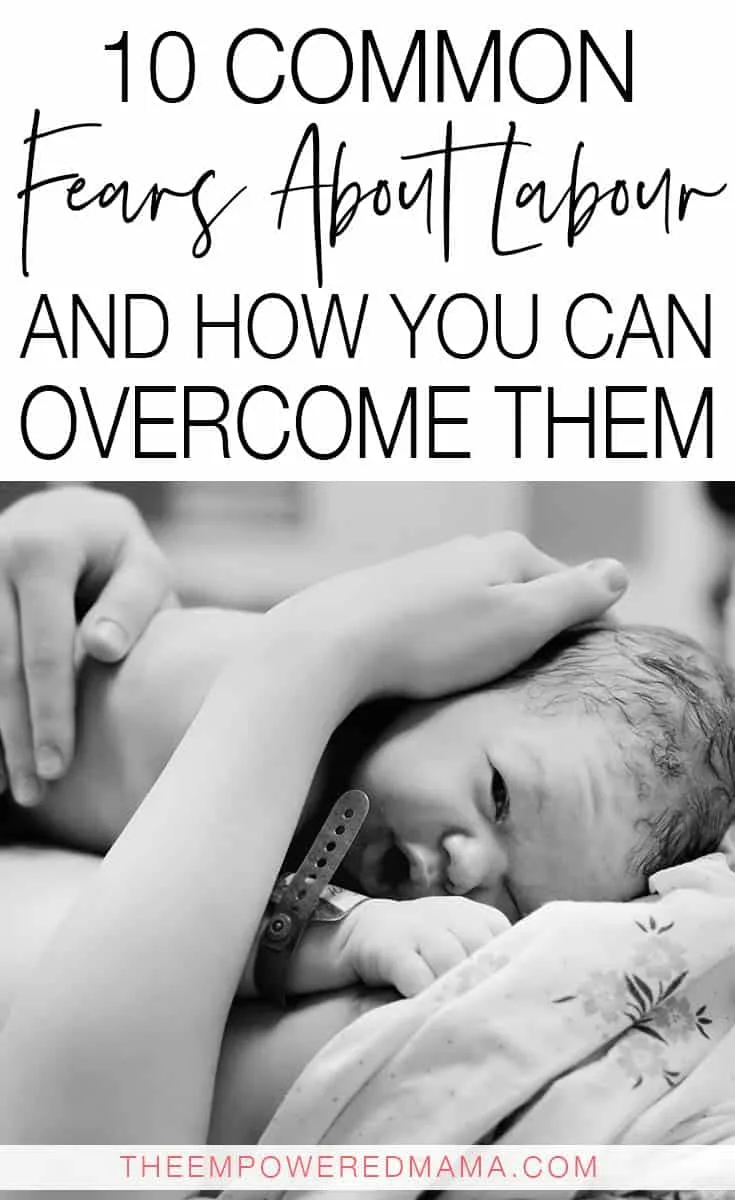
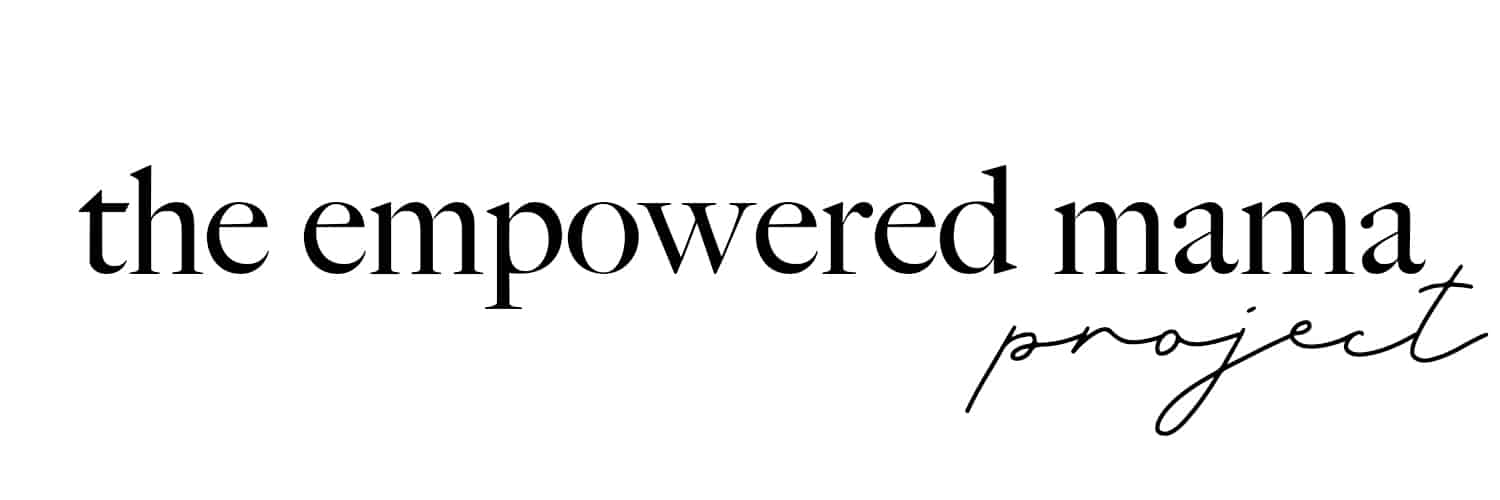



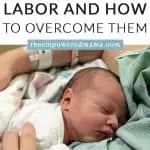


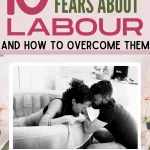








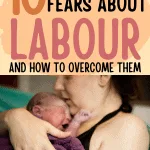
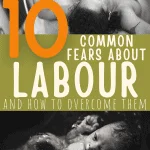




Paige Macgregor
Tuesday 11th of June 2019
I'd love to leave my own here - fear of being vulnerable. For me a few on this list are secondary fears, but mostly I'm afraid of the loss of control and dependence on those around me when I'm "out of it". So other worries stem from that such as my wishes not being honoured for the way my birth goes, the necessity of having people around when I'm pooping myself and grunting through contractions, etc. This is real for me that the idea of running out of time to get to the hospital and having my baby alone, at home is a positive one for me. Have you ever heard this fear from other mums?
I'm pregnant now with my 3rd and my 1st 2 labours were very fast and intense, hence the at home birth fantasy haha.